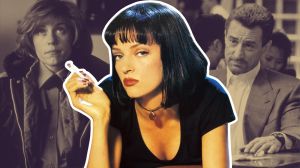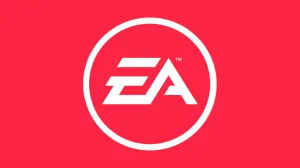Almost 11 years after being name-dropped on the series premiere of Smallville, the DC hero Green Arrow go this own TV series for the first time when Arrow premiered ten years ago. The series launched on October 10, 2012, led by actors Stephen Amell as Oliver Queen; John Barrowman as Malcolm Merlyn; David Ramsey as John Diggle; and Willa Holland as Thea Queen. A few weeks later, an actor hired for a quick walk-on role would steal all of her scenes, and Emily Bett Rickards’s Felicity Smoak would become a fixture on the series for the rest of its eight-season run.
Videos by ComicBook.com
In the series, Oliver Queen is a billionaire playboy, who is cheating on his girlfriend, Laurel (Katie Cassidy), with her sister, Sara (Jacqueline MacInnes Wood). Oliver and go on a cruise with Oliver’s dad on the family yacht, only for the ship to wreck. In their final moments together on a lifeboat, Oliver’s father (Jamey Sheridan) confesses to a litany of sins before taking his own life to save his son’s. Reaching shore all alone, with his father dead and Sara presumed dead, Oliver finds himself stranded on the island of Lian Yu and forced to learn to live off the land.
Luckily — or unluckily? Honestly, it’s really hard to say — Oliver isn’t alone on the island. A young woman named Shado takes him under her wing and, with the help of her father Yao Fei Gulong (Byron Mann), they teach Oliver archery and self-defense, unknowingly preparing him to be the spark that lights a flame no one could possibly have imagined. After Oliver returned to Starling City, he became “The Hood,” a hooded vigilante working his way down a kill list made up of his corrupt father’s old business contacts.
(Yeah, his superhero identity needed some workshopping.)
In that first season, Oliver’s friend Tommy Merlyn (Colin Donnell) was established, as well as his ally-turned-nemesis Slade Wilson (Manu Bennett). It was Slade whose Mirakuru formula — think a super soldier serum that makes you crazy — first introduced the idea of enhanced humans to the world of Arrow.
Slade and his Mirakuru army would be far from the last brush with the extraodinary for Oliver. During the show’s second season, Oliver met Central City police scientist Barry Allen (Grant Gustin). Barry was briefly a rival for Felicity’s affection, but ultimately became a close friend to Oliver and his team, and even gave Oliver his first mask, so the vigilante could occasionally let his hood down. Of course, Barry would be struck by lightning shortly after their first meeting, and by the time Oliver met up with him again, Barry had become The Flash, the fastest man alive.
The Flash debuted on October 7, 2014, and marked the first — but not the last — spinoff from Arrow. The massive popularity of the two, and the long shadow cast by a decade of Smallville, transformed the face of The CW. Alongside the long-running Supernatural, Arrow and The Flash made the network, which had previously been best-known for shows like Gossip Girl and 90210, into a key destination for genre TV fans, harkening back to its early days as the network that inherited Charmed.
The Flash became the highest-rated show on The CW, and it was impossible to ignore how well Arrow did in the ratings whenever it featured appearances by familiar DC Comics faces, so not only did The CW decide that the two shows needed to establish regular crossovers, but that they would always be expanding the universe of the shows, looking for more potential spinoff ideas.
A year after The Flash, Arrow‘s executive producer Greg Berlanti was tapped by CBS to work his superhero magic on a massive stage, bringing Supergirl to one of the big three U.S. networks on July 8, 2015. Fans immediately wondered whether Supergirl, which not only aired on a different network but was also filming in Los Angeles (as opposed to Vancouver, British Columbia, where Arrow and The Flash were shot), would cross over with the two CW shows, but producers dismissed the idea at first. Besides, The CW had bigger fish to fry.
A number of characters discarded from Arrow and The Flash — including Sara Lance (now played by Caity Lotz), Captain Cold and Heat Wave (Prison Break stars Wentworth Miller and Dominic Purcell), and Firestorm (Victor Garber) got their own spinoff in the form of DC’s Legends of Tomorrow. Gathered together by Time Master Rip Hunter (Arthur Darvill), the ragtag group of heroes was called together to save the lives of Hawkman (Falk Hentschel) and Hawkgirl (Ciara Renee) and defeat the immortal tyrant Vandal Savage (Casper Crump). The show debuted in January 2016, while Supergirl was struggling to keep the kind of ratings that CBS wanted. By March of that year, Berlanti Productions — who produced all five series — pulled the trigger on a multiverse-spanning crossover between The Flash and Supergirl, which served two purposes: it aimed to save Supergirl on CBS but, failing that, it would explicitly make Supergirl part of the shared universe fans colloquially referred to as “The Arrowverse.”
The latter is what ultimately happened, with CBS cancelling Supergirl and The CW swooping in to save it. Those four shows — Arrow, The Flash, Supergirl, and DC’s Legends of Tomorrow — mark the core of the Arrowverse, and the period when they were all airing together marked the high water mark in terms of the universe’s pop culture influence. Berlanti would later add Black Lightning to the list in January 2018 — but series creator Salim Akil remained cagey about whether or not those characters would ever meet the rest of the CW’s DC heroes. In late 2018, the character of Kate Kane/Batwoman was introduced in the “Elseworlds” crossover event, which also tied in to Arrow, The Flash, and Supergirl. With six DC superhero series now airing on the network, The CW was prepared for the biggest thing that they have ever done: Crisis on Infinite Earths.
An adaptation of the 12-issue maxiseries of the same name, Crisis on Infinite Earths tied all six of the Berlanti-produced DC shows over, allowing the Black Lighting heroes to meet The Flash, Superman, and more. It also incorporated elements and characters from non-CW, non-Arrowverse shows (like HBO Max’s Titans, Doom Patrol, and Swamp Thing) and DC movies and shows from the past, from 1966’s Batman to 2005’s Superman Returns and even Smallville.
By 2019, when Crisis was airing, Arrow star Stephen Amell had decided to move on from his role as Oliver Queen, and Arrow was coming to an end. In a move that was as strange as it was fitting, Oliver didn’t die facing off with Ra’s al Ghul (defeated in season 3) or Prometheus (defeated in season 5), but with shadow demons led by the Anti-Monitor. He came back as The Spectre, playing an instrumental role in saving the multiverse from destruction, and giving up his life to set Earth-Prime (a new world that incorporated Supergirl‘s Earth-38 and the world where Black Lightning took place into the main-line Arrowverse continuity) on the right path.
Arrow was more than just a breeding ground for crossovers; the series gave fans what many argue is the best live-action interpretation of Deathstroke, a fan-favorite villain who has shown up in the movies and on Titans. It made Ra’s al Ghul (played in the series by Matt Nable) a villain who had ties to the whole DC universe, rather than just Batman. It gave Vigilante (later seen on Peacemaker) his live-action debut, and successfully pulled off one of the best surprise twists in the history of live-action superheroes with the Prometheus (Josh Segarra) reveal, which led to arguably the best cliffhanger in the genre at the end of Arrow season five. With Legends of Tomorrow and Arrow‘s eighth season, the show set the stage for a future generation of DC heroes, and throughout the Arrowverse, marginalized groups who didn’t usually see themselves represented in superhero media, found a voice.
And, honestly, after Arrow ended, the “Arrowverse” was never quite the same again. Crisis on Infinite Earths was kind of the series finale, or at least the big climax.
After Arrow wrapped up, The CW had planned to bring back a number of its supporting characters in Green Arrow and the Canaries, a show that would be set in the future and feature Mia Smoak (Katherine McNamara), the daughter of Oliver Queen and Felicity Smoak, as a new Green Arrow — a role she took on in Crisis on Infinite Earths. The series got a backdoor pilot in Arrow‘s penultimate episode, but it failed to move forward at the network.
With ratings across the board dipping at The CW, and the network’s ownership beginning to look for a potential buyer, it became more and more fiscally conservative. Supergirl ended, along with Black Lightning, and fans wondered whether the Arrowverse itself would be gone soon enough. The CW offset those concerns by rolling out Superman & Lois, which drew huge ratings and great reviews. Along with Walker and Kung Fu, the series seemed to be charting a new course for the network. But 2022 would shake things up in a big way. In May 2022, The CW cancelled both Batwoman and DC’s Legends of Tomorrow, and in June, Superman & Lois revealed in a throwaway line that the series does not actually take place on Earth-Prime, and that the hero seen on Supergirl and in Crisis on Infinite Earths was actually a different version of the Man of Steel.
Arrow had its ups and downs, but remained popular throughout, and sparked a shared universe of superhero storytelling that will be difficult to match. With about 450 hours of TV created so far (not including Superman & Lois, or the final season of The Flash), what started as a show about a guy with a bow and arrow, eventually spiraled out to become a massive world filled with dozens of superheroes and villains, many of whom had never been seen in live-action before. Arrow changed the way superheroes are viewed on TV, and popularized characters like Felicity Smoak and Wild Dog, who had been essentially afterthoughts in the comics for years. And it set the stage for the largest-scale superhero crossover DC is ever likely to produce in live action.








